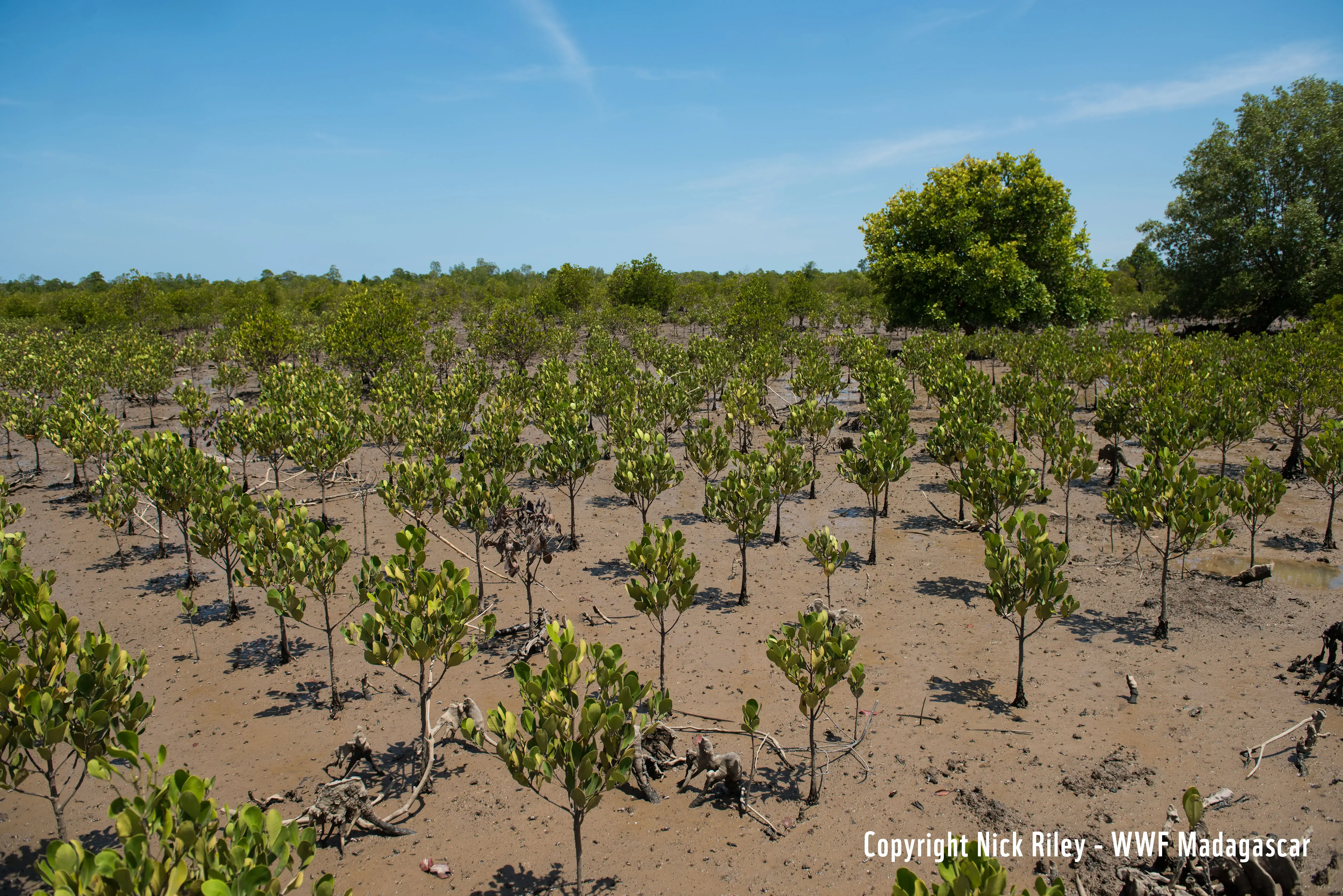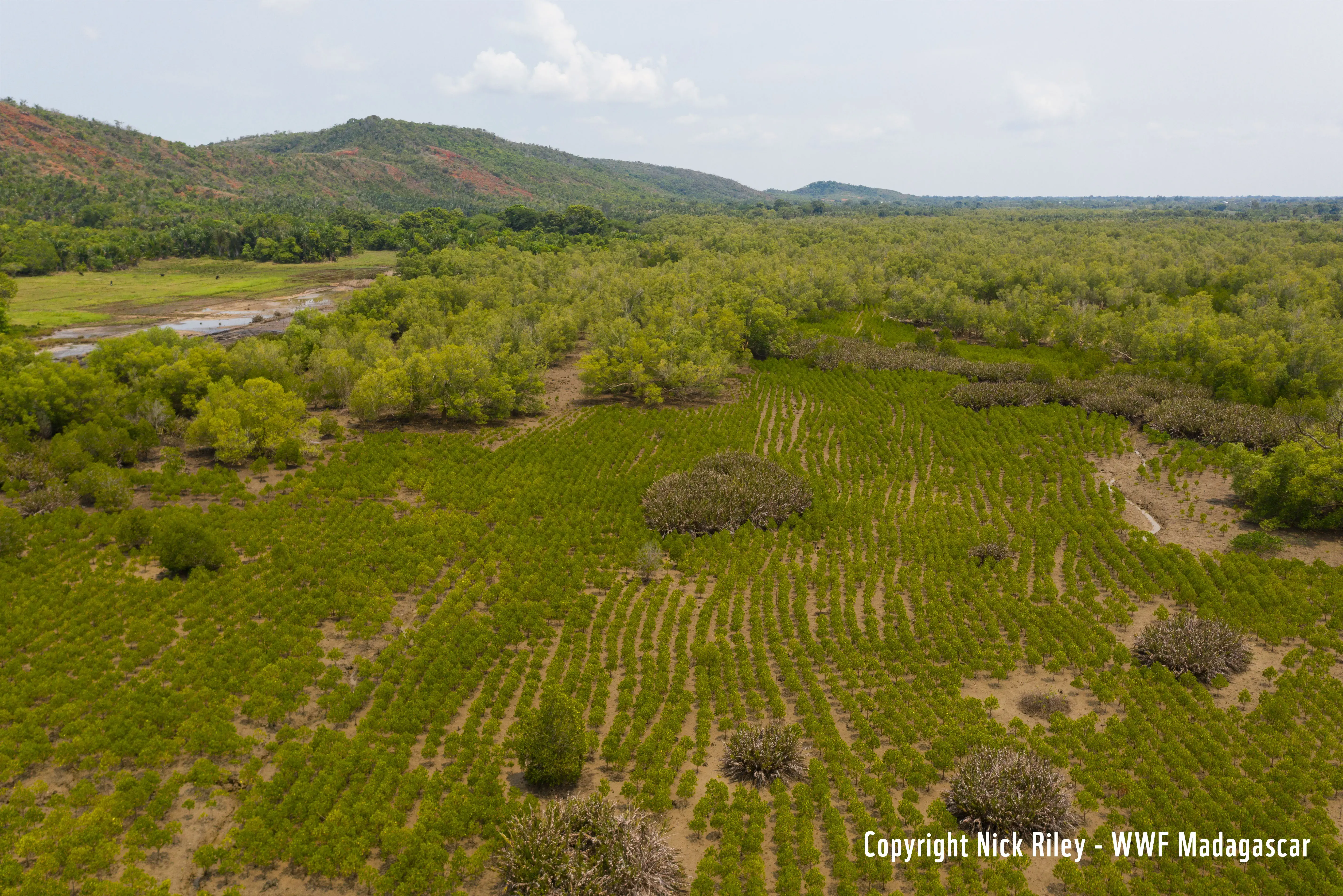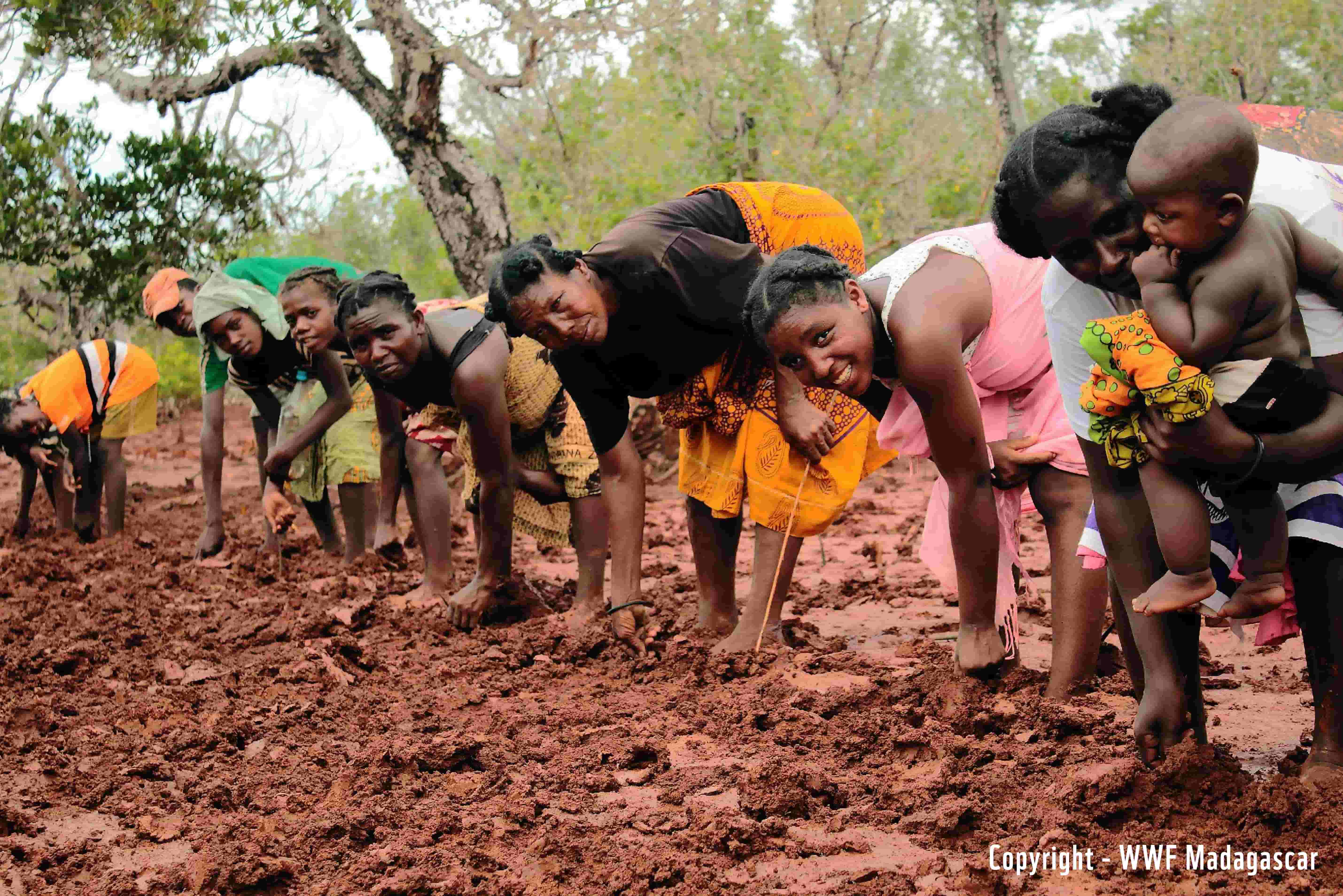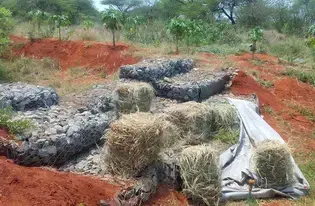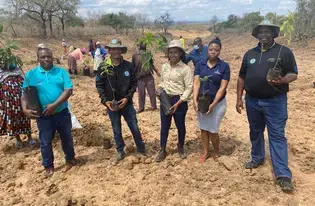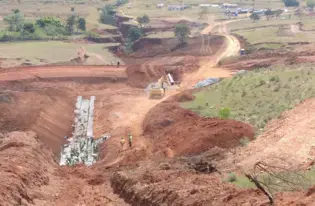To meet demand for charcoal in the towns of Nosybe, Ambanja, and Ambilobe in Madagascar's Diana Region, local people chop down thousands of mangrove trees each year. The expansion of agriculture also leads to the degradation of this key carbon-storing ecosystem: Many mangroves are converted into rice paddies, and loose cattle munch at the tender stalks. The lack of local regulations to halt this destruction means that these biodiverse ecosystems suffer significant losses year after year, especially during the flood-inducing rainy season.
To break this vicious cycle of natural resource depletion, natural capital degradation, and increasing poverty, WWF Madagascar is helping local communities manage their mangroves sustainably. So far, 1,400 hectares have been actively restored with 11,000,000 individual sprouts (around 8,000 per hectares). Prioritizing species that are adaptable and most used by the community has helped to build resilience to the effects of climate change. In addition, the communities have developed and adopted new management rules that allow the mangroves to naturally regenerate in areas of ecological importance.
Restoring the mangroves has also allowed local fisheries to maintain their level of production, which is important regionally and nationally. The decline of local shrimp populations has also threatened the livelihoods of several thousand fisherfolk and forced several fishing companies to abandon the area. Now, the restored ecosystem is once again welcoming shrimp, sardinella (Malainisaja) and mackerel (Mahaloky) into its brackish waters. The ecosystem is also protecting local crabs (Scylla serrata), who have been threatened by habitat destruction.
Local communities are at the center of this project. With 140,000 people actively working to restore the mangroves - the majority of them women and members of vulnerable groups - local residents are now more aware of the importance of preserving this ecosystem. Farming and fishing communities work on restoring the mangroves only during the overlapping agricultural lean season and annual rest period for shrimp fishing. That allows for massive participation from both farming and fishing communities.
How does WWF Madagascar track the project's progress? First, an “ecological monitoring” system, which tracks where the mangroves are regenerating, is established in the area. Second, a "catch monitoring" system is set up with the communities to monitor changes in fish yields. Third, ad hoc assessments of the state of the ecosystem are conducted throughout the project area. With this level of community engagement, the mangroves and the people and biodiversity that call them home are coming back stronger than ever.


